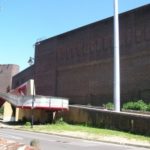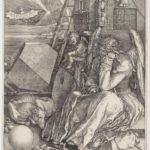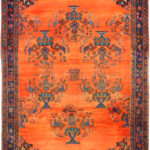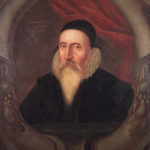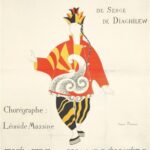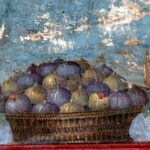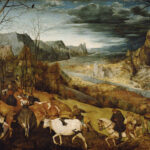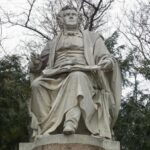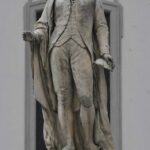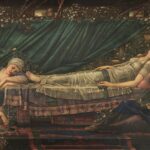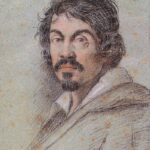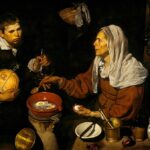Select the Lecture below – Click again to close : Select images to enlarge
Friday 27 July 2018 – The Stones of Oxford: A visual history of the buildings of the University of Oxford
Lecturer: Christopher Rogers
A historic review of the spectacular architecture of Oxford and its university. Oxford probably contains the finest surviving townscape in Europe. The lecture begins with a review of the work of Cardinal Wolsey at Christchurch before laying emphasis on the creation of the great Baroque buildings of The Queen’s College, Christchurch, Trinity and Worcester. The latter part of the lecture explores the role of the 19th century architects, especially Pugin and Scott, and finishes with the building of Keble and the Oxford Museum; two of the most important buildings of the Gothic Revival.
Friday 28 September 2018 – Misshapen Pearl – An Overview of the Music of the Baroque Era
Lecturer: Sandy Burnett
Starting in 1607 with Monteverdi’s astonishing opera Orfeo, and ending in 1759 with the death of that great “English” composer George Frideric Handel, the Baroque era produced music of great brilliance and emotional depth. In helping to navigate us through its choppy waters, Sandy draws on his experience as broadcaster, conductor and hands-on practical musician. His in-depth exploration of this fascinating period of Classical music draws on hand-picked images, autograph scores and recorded musical illustrations, with a special focus on the work of Johann Sebastian Bach.
Friday 26 October 2018 – World War One: Art, Music and Poetry; Wilfred Owen and his Contemporaries
Lecturer: Denis Moriarty
Wilfred Owen is at the heart of the most famous and familiar poetry to emerge from the trauma of the First World War. This lecture sets his poems in the context of his fellow-soldiers, Brooke, Sassoon, A.A. Milne and others, and is illustrated by war artists such as Orpen, Nevinson and Sargent, photographs from the battlefields, the music of Elgar, Butterworth, Ivor Gurney and Benjamin Britten, and the songs of the soldiers from the trenches.
Friday 23 November 2018 – Charles Dickens Conjurer: The story of Charles Dickens as a magician told through one of his playbills.
Lecturer: Ian Keable
Amongst his other skills Charles Dickens was an accomplished conjurer, calling himself The Unparalleled Necromancer.We know this from a playbill that Dickens wrote for a show he did on the Isle of Wight.Playbills were the principal means of advertising entertainment in the 19th century, capturing the public’s imagination with their exaggerated wording. In this talk Dickens’s own playbill is brought to life by reference to their historical development through various amusing animal acts, contemporary conjurors that directly influenced him and some demonstrations of legerdemain which the great man himself actually performed. And all presented by professional magician and author of Charles Dickens Magician: Conjuring in Life, Letters & Literature.
Friday 25 January 2019 – Basingstoke and Its Contribution to World Culture
Lecturer: Rupert Willoughby
One of the most derided towns in England, renowned for its dullness, Basingstoke is distinguished only by its numerous roundabouts and absurd Modernist architecture. Rupert explains that the post-war planners, who inflicted such features as ‘the Great Wall of Basingstoke’ on the town, were politically-motivated and bent on destroying all traces of its past. He reveals the nobler Basingstoke that is buried beneath the concrete, and the few historic gems that have survived the holocaust. Hilariously told, it is a story that neatly illustrates the ugliest episode in England’s architectural history. As Betjeman wrote prophetically, “What goes for Basingstoke goes for most English towns”.
Friday 22 February 2019 – As Good As Gold – The story of gold – its significance and symbolism within the history of art.
Lecturer: Alexandra Epps
Experience the story of gold and its significance and symbolism within the history of art – as the colour of the sun; the colour of divinity; the colour of status and the colour of love. From creations ancient and contemporary, sacred and profane – all that glitters is certainly gold…
Friday 22 March 2019 – The Seine Estuary Capturing the 19th Century Imagination
Lecturer: Carole Petipher
The ever changing sky and sparkling Seine estuary where sky, sea and earth seem to fuse, attracted the 19th artists, writers and musicians. Through the guidance of the “Master of the Skies” Eugène Boudin, Monet took his first ever painting lesson in the open air here. A new way of approaching art was opened up resulting in Impressionism. This lecture will look at the host of artists who flocked to the picturesque harbour of Honfleur and its surroundings to capture, in Baudelaire’s words, “this green and rose vastness which goes to my head like an intoxicating drink”.
Friday 26 April 2019 – Victoria and Albert, Art and Love
Lecturer: Barbara Askew
This lecture celebrates the 200th Anniversary of the births of Queen Victoria and Prince Albert who were first cousins and born just three months apart in 1819. Their shared enthusiasm for art and music endured throughout the twenty-two years of their marriage and they demonstrated their love through the works of art and jewellery they gave each other for birthdays, Christmases and anniversaries. Victoria and Albert understood and appreciated sculpture more than any of their predecessors since Charles I. They furnished and extended Buckingham Palace, made significant changes to Windsor Castle and commissioned three other royal residences, Balmoral, Sandringham and Osborne – the single most important example of their shared taste. Theirs was a partnership of patronage by a monarch and her consort which is unique in the history of the British monarchy.
Friday 24 May 2019 – The Botanic Gardens of London Before Kew
Lecturer: Mark Spencer
The 17th & 18th centuries saw the introduction of thousands of plant species from across the world into northern Europe. Many of these plants are now staples of our gardens: magnolias, lilies, pelargoniums & Michaelmas-daises to name a few. Long before Kew Gardens was established, these plants found new homes in the, then great, gardens of London and its environs; places such as, the long-lost garden at Westminster, Hampton Court under the care of George London, Fulham Palace home to Bishop Compton or the two great gardens of Chelsea, one of which survives – the Chelsea Physic Garden.
Friday 28 June 2019 – Making a Stand – Sporting Architecture, List it or Lose it?
Lecturer: Simon Inglis
There are currently over 316,000 listed buildings in England, and thousands more in Scotland and Wales. But only a tiny proportion of those are related to sports or recreation. After 35 years of research in the field, Simon Inglis introduces us to some of the most interesting examples, from a 15th century tennis court in Scotland to a 1970s skatepark in Essex. Why are these buildings – among them grandstands, pavilions, squash courts and scoreboards – so important? What do they tell us about our sporting heritage and social history? And why has it taken so long for recreational buildings to achieve the same level of protection afforded to buildings in other sectors? Wherever possible Simon will feature local examples in his lecture.
Friday 26 July 2019 – The Queen of Instruments: The Lute Within Old Master Paintings
Lecturer: Adam Busiakiewicz
The lute holds a special place in the history of art: painters of the Italian Renaissance depicted golden-haired angels plucking its delicate strings, evoking celestial harmony; in the sixteenth century, during the rise of humanism, the lute was a becoming pastime of educated courtiers, as depicted by the likes of Holbein and Titian; throughout the seventeenth century, the instrument continued to play a key role in emphasising the intimate, debauched and transient pleasures of interior scenes by Jan Steen and portraits by Frans Hals. This lecture looks at the lute, and other musical instruments, as devices to express various aspects of the human character throughout the ages.
Friday 27 September 2019 – Secret Art in the Passport – how we use it to fox the forger
Lecturer: Martin Lloyd
From the wax seal to the microchip, man has exploited the skill of the artist and artisan in his attempt to manufacture a forgery-proof document. Taking you through three centuries of passport design, this lecture explains the overt and uncovers the covert to illustrate the defences built in to the passport and the tricks the forger uses to defeat them. You will never see your passport in the same light again!
Friday 25 October 2019 – The Painted Church: Medieval wall paintings in English cathedrals and churches
Lecturer: Roger Rosewell
Before the Reformation the walls of cathedrals and churches were lavishly painted with decorative patterns and figurative imagery depicting biblical stories, the miracles of Saints, Last Judgement themes, and a range of other subjects including Christian pieties and Warnings against sins and transgressions. This richly illustrated lecture explains the history of these paintings and their meaning, the subjects they showed, how they were painted and by whom. Style, inspirations, techniques and pigments are among the aspects discussed. It concludes with a description of modern conservation methods.
Friday 22 November 2019 – Edouard Manet and Music
Lecturer: Lois Oliver
Music was a constant theme in Manet’s life and art. His wife Suzanne Leenhoff was a gifted pianist, and regular musical soirées were held at the Manet family home. His pictures of musicians and their audiences range from major early canvases depicting itinerant gypsy musicians and Spanish dancers, through to paintings encompassing the full range of Parisian musical culture, from private performances to street entertainment, café concerts and the Paris Opera. Bringing together Manet’s art and the music that inspired him (including Spanish flamenco, Haydn string quartets, Wagner piano reductions, café songs, and opera highlights) this lecture immerses you in Manet’s world.
Friday 24 January 2020 – Salvador Dali: 20th Century Renaissance Artist
Lecturer: Julia Musgrave
‘The secret of my influence has always been that it remained secret’ – Salvador Dalí’
Like the Renaissance artists he admired, Salvador Dalí did not restrict his creative output to painting but was also a writer, poet, engraver, sculptor, architect, photographer, theatre designer, and jewellery designer. As well as designing the latter, Dalí selected the materials to be used, focusing not just on the colours or the value of the material, but also on their symbolic meanings. Jewels such as ‘El cor reial’ (1953, The Royal Heart) have become iconic works and are considered to be as exceptional as his paintings. He also was an omnivorous reader who was as interested in science as he was in art and in this his work also reflects the Renaissance artist he admired. This lecture explores the work of Dalí the designer and science enthusiast – a Renaissance artist in the 20th century.
Friday 28 February 2020 – Beethoven at 250- Classical Music’s Greatest Revolutionary
Lecturer: Sandy Burnett
To mark the 250th anniversary of the birth of Ludwig van Beethoven, born in December 1770, Sandy guides us through the life and work of this brilliant, cantankerous, visionary and astonishingly original composer, a man who tore up the rule book of classical music. Visual illustrations include a selection of contemporary portraits, while musical examples are drawn from his genre-busting piano sonatas, quartets and symphonies, and from the revolutionary opera Fidelio. We’re talking about much more than just a musician here – Beethoven was a true Romantic artist, or as he preferred to describe himself, a “poet in sound.”
Friday 27 March 2020 – Cancelled due to Coronavirus precautions
Lecturer: Mary Yule
A light-hearted but critical review of public sculpture today. Since antiquity, sculpture has transformed public spaces, celebrating and commemorating people and events and, at best, reflecting the spirit of the age. Contemporary public sculpture is more diverse and often aims to meet political, social or corporate agendas, yet at best, it can provide an enlivening and sometimes controversial focus for our public spaces. The lecture discusses many successful examples of public sculpture today, like the Angel of the North, Richard Serra’s Fulcrum at Broadgate and the series of commissions for the fourth plinth in Trafalgar Square, plus some that are less successful. It also looks to the future and to works not yet realised, like the White Horse at Ebbsfleet – and much more besides.
Friday 24 April 2020 – Cancelled due to Coronavirus precautions
Lecturer: Susan Owens
What is silverpoint drawing? How can you tell the difference between a quill and a reed pen? This lecture looks in detail at the materials and techniques used by some of the greatest masters, including Leonardo and Raphael. It also explores innovative contemporary drawings made by laser-cutting, pricking, rubbing and tearing.
Friday 22 May 2020 – Cancelled due to Coronavirus precautions
Lecturer: Timothy Wilcox
The Bayeux Tapestry is instantly recognisable and one of the most outstanding cultural objects to survive from the early Middle Ages. Long admired for its vivid narrative, today it is the unanswered questions that most intrigue modern audiences: was it made in England or France? Was it stitched by men or women? This sparkling lecture looks not only at its creation, but also at its more amazing afterlife.
Displayed by Napoleon to bolster French ambitions for a new cross-channel invasion; cherished by Victorian embroiderers as an icon of women’s heroic joint efforts; hunted down by Hitler, who was outwitted by bureaucratic obfuscation.
A fluent French speaker, Timothy Wilcox brings a lifetime’s interest in Anglo-French relations to bear on a famous object set to become even more celebrated as it enters its next, surprising chapter.
Friday 25 September 2020 – Artists, Illness and Creativity
Lecturer: James Grant
It is well known that both physical and psychological illness can affect the creative process. Both can act as a stimulus but illness can also act as a major modifying influence on an artist’s perception of the world and on an artist’s creative output.This lecture seeks to explore this relationship in artists such as Durer, Goya, Monet and Kahlo in an endeavour to understand better how different illnesses impacted on their genius.
Friday 23 October 2020 – Raphael: Painter of Perfection
Lecturer: Paula Nuttall
Raphael was one of the greatest and most influential of all painters, a superstar even in his own lifetime, who remains a byword for classic perfection. This lecture surveys his life and work, from his origins in Urbino, his early years in Florence, his meteoric rise to fame at the papal court in Rome, to his sudden death at the height of his powers, aged only 37. We look at such masterpieces as the Vatican Stanze, the Sistine Madonna, the Transfiguration and the famous Vatican tapestries, charting his astonishing artistic evolution and explaining his importance in the history of art.
Friday 27 November 2020 – In the Kingdom of the Sweets
Lecturer: Nigel Bates
The Nutcracker has delighted audiences at Christmas for many decades yet it was deemed a failure at its first performances. We take a close look at how this well-loved ballet now takes its rightful place on stage and how the music of Tchaikovsky along with story-telling, design and dance all come together to make the most magical escape for young and old alike. Includes several performance video clips.
Friday 22 January 2021 – Pots and Frocks
Lecturer: Ian Swankie
Best known for his outlandish appearances dressed as his feminine alter ego, Claire, Grayson Perry is now a core part of the art establishment, a Turner Prize winner, Royal Academician, popular broadcaster and colourful character. He’s possibly one of the world’s best-known contemporary artists. His works of ceramics, textiles, tapestries and prints are highly sought after. Often controversial, he tackles difficult subjects in a poignant yet witty way and holds a mirror up to society. This talk will examine Grayson Perry’s work, his exciting and thought-provoking exhibitions, and the unique character inside the flamboyant frocks.
Friday 26 February 2021 – Lunaticks, Slavers and the Genteel: Portraits by Joseph Wright of Derby
Lecturer: Justin Reay
Although Joseph Wright of Derby was highly regarded as a portraitist by his peers, he is now better known as the artist of the Industrial Revolution. His unflattering studies of the leaders of industry and trade in the Midlands and Liverpool give a fascinating insight into the character needed to make a good living in a tough era.
Friday 26 March 2021 – Treasures of the Black Tent – Antique Tribal Rugs and Dowry Weavings of the Persian and Central Asian Nomads
Lecturer: Brian MacDonald
The lecture begins in Outer Mongolia in 5th Century BC and follows the 11th Century AD migrations from Turkmenistan into the Caucasus, Persia and Afghanistan. The lecture will introduce the nomadic tribes of these countries and their woven rugs, carpets and dowry bags, which illustrate the skill of the women who produced exquisite works of woven art whilst living and travelling in primitive conditions and hostile landscapes.
Friday 23 April 2021 – The Two Gustavs – Mahler and Klimt
Lecturer: Gavin Plumley
Gustav Klimt and his colleagues broke away from the Imperial-endorsed art institutions in Vienna in 1897 and founded the Succession. That was the same year that Gustav Mahler arrived to take charge of the Opera House in the city. This lecture asks what fundamentally links and, indeed, divides Klimt and Mahler.
Friday 28 May 2021 – The Genius of Antonio Stradivari
Lecturer: Toby Faber
Two hundred and fifty years after Antonio Stradivari’s death, his violins and cellos remain the most highly prized instruments in the world. Loved by great musicians and capable of fetching fabulous sums when sold, their tone and beauty are legendary. Every subsequent violin-maker has tried to match them. Not one has succeeded. How can that be?
This lecture explores that central mystery by following some of Stradivari’s instruments from his workshop to the present day. It is a story that travels from the salons of Vienna to the concert halls of New York, and from the breakthroughs of Beethoven’s last quartets to the first phonographic recordings. Toby Faber’s book, “Stradivarius: Five violins, one cello and a genius”, was described in The New York Times as ‘more enthralling, earthy and illuminating than any fiction could be.’
The lecture is illustrated with pictures of violins and of key individuals and locations, as well as with some short musical recordings.
Friday 25 June 2021 – The Extraordinary Life of Misia Sert – Queen of Paris 1877 to 1950
Lecturer: Julian Halsby
Misia Sert was a virtuoso pianist of Polish descent who hosted an artistic salon in Paris. She was a patron and friend of numerous artists, Toulouse–Lautrec, Pierre Bonnard, Edouard Vuillard, and Renoir who wanted to paint her nude. She knew Debussy and Ravel who dedicated several pieces to her. A close confidant and friend to Coco Chanel, Misia was at the heart of modern art and music in Paris.
Friday 23 July 2021 – Provenance Matters – Mass Faking of the Russian Avant-Garde
Lecturer: James Butterwick
This lecture takes us through the huge surge of interest in the Russian avant-garde. Previously unknown artists became famous and much sought after by the new Russian-buying public. However, with it came an industrial scale level of faking of their pictures, often with the connivance, unwitting or otherwise, of Western and Russian experts. This lecture will examine the evidence for and against such paintings including attempts to “sneak them under the radar” through Western institutions, as well as attempts to use the Western judicial systems and fake news to help “legalise” the works.
Friday 24 September 2021 – The Bayeaux Tapestry: 950 years of propaganda, intrigue and spin
Lecturer: Timothy Wilcox
The Bayeux Tapestry is instantly recognisable and one of the most outstanding cultural objects to survive from the early Middle Ages. Long admired for its vivid narrative, today it is the unanswered questions that most intrigue modern audiences: was it made in England or France? Was it stitched by men or women? This sparkling lecture looks not only at its creation, but also at its more amazing afterlife.
Displayed by Napoleon to bolster French ambitions for a new cross-channel invasion; cherished by Victorian embroiderers as an icon of women’s heroic joint efforts; hunted down by Hitler, who was outwitted by bureaucratic obfuscation.
A fluent French speaker, Timothy Wilcox brings a lifetime’s interest in Anglo-French relations to bear on a famous object set to become even more celebrated as it enters its next, surprising chapter.
Friday 22 October 2021 – Master Drawings Close Up
Lecturer: Susan Owens
What is silverpoint drawing? How can you tell the difference between a quill and a reed pen? This lecture looks in detail at the materials and techniques used by some of the greatest masters, including Leonardo and Raphael. It also explores innovative contemporary drawings made by laser-cutting, pricking, rubbing and tearing.
Friday 26 November 2021 – ‘Pickled for Posterity’: British Art and the Second World War
Lecturer: Monica Bohm-Duchen
“What did it look like? They will ask in 1981, and no amount of description or demonstration will answer them.
Nor will big, formal compositions like the battle pictures which hang in palaces; and even photographs, which tell us so much, will leave out the colour and the peculiar feeling of events in these extraordinary years.
Only the artists with his heightened powers of perception can recognize which elements in a scene can be pickled for posterity in the magical essence of style” (Sir Kenneth Clark, 1942).
In marked contrast to most of the art produced under the dictatorships, most British art produced during World War Two (primarily under the auspices of the War Artists’ Advisory Committee, headed by Clark) was low-key and understated, the artists being more concerned with creating an unsensational record of the war in its more intimate aspects than with nationalist rhetoric, and with celebrating the quintessentially English qualities of stoicism and resilience. As much emphasis was therefore given to the Home Front as to the war in Europe and beyond.
This illustrated lecture will also address a less familiar area of British cultural history: namely, the wartime activities of émigré artists from Nazi-occupied Europe who sought refuge in Britain in the late 1930s.
Particular emphasis will be placed on their anti-fascist imagery and on the work they produced in the British internment camps for so-called “enemy aliens”, set up in 1940, mostly on the Isle of Man. It will also look at the work of British POWs such as Ronald Searle, who managed to produce some extraordinary images in captivity, and the British artists who were present at the liberation of the concentration camps.
Friday 28 January 2022 – Furniture of the Common Man – Vernacular furniture
Lecturer: Janusz Karczewski-Slowikowski
A look into the lives of ordinary people through their furniture. Most furniture in museums and books is representative of the wealthier social classes and so tells us little about the living conditions of the ‘humbler classes’. Vernacular, in the sense of ‘every day’ and ‘common’, furniture was seldom ‘crude’ or ‘primitive’ and often displayed as much sophistication in construction and design as more costly items. This lecture focuses on the period 1600-1800 but also looks at earlier and later items.
Friday 25 February 2022 – Wonder Workers and the Art of Illusion – the history of magic through art and pictures
Lecturer: Bertie Pearce
From the beginning of time the fascination with magic and the impossible has been widespread. Egypt was the cradle of magic. Sorcerer Priests used scientific principles to create illusions for the edification of worship and to hold power over the people. Where there was power there was magic. Then there is the age-old skill of sleight of hand, which proves that ‘the hand is quicker than the eye’. Magicians were known as ‘Jongleurs’ lest they be sentenced to death for ‘witchcraft and conjuration’ under the edicts of Henry VIII.
With the emergence of the Music Hall, Magic gained a new respectability and audiences flocked in their thousands to watch the extraordinary feats of The Great Illusionists. This gave birth to legendary tricks such as pulling a rabbit from a hat and sawing a lady in half. And if magicians guarded their secrets with their lives, how was the Magic Circle formed ? – Home to 10,000 secrets.
Even Today in our super technical age of ipods and broadband, the wonder and surprise of magic are as popular as ever, not forgetting the Harry Potter craze.
‘Wonder Workers and the Art of Illusion’ is a whistle stop tour of the history of mystery from 3000 BC to the 21st century and be careful! – you might be amazed and bewitched.
Friday 25 March 2022 – Sacred Art of Ancient China
Lecturer: Jon Cannon
Join me to tour the religious art and architecture of China. We will see examples of work of the great faiths that dominated the history of that great civilisation, including the ancient, indigenous Confucian and Taoist traditions; the image-rich Mahayana version of Buddhism that has been hugely influential in the country for two thousand years; and the distinctive Chinese responses to Christianity and Islam.
At the heart of this rich, and often precociously humanistic culture lay a series of concerns of truly ancient origin: the maintenance of harmonious relations between men and Heaven; respect for one’s family, including the spirits of one’s ancestors; and the role of the Emperor as the fulcrum of life in the ‘central Kingdom’, a role as much spiritual as secular.
During the lecture we will visit mountain-tops decorated with Confucian calligraphy; some of the oldest wooden buildings in the world — the Buddhist temples of Wutaishan, built in the eighth century and with their decoration and sculpture intact — and Mandarin’s gardens, their design infused with symbolism from Taoist, Buddhist and Confucian traditions. These between them comprised the ‘three teachings’ (San Jiao) encouraged by the imperial Chinese state.
Even today, Beijing’s layout is recognisably that of a sacred city designed around the palace and sacrificial altars associated with the imperial cult: we will see what remains of these, and ponder the role of religion in China’s modern, secular and rapidly developing state. By the end of the hour, you will have a clear and vivid idea of the enormous significance of religion for the Chinese arts.
Friday 22 April 2022 – Van Gogh and Gauguin in Arles
Lecturer: Stephen Duffy
The extraordinary story of the nine weeks that Van Gogh and Gauguin spent together in Arles in southern France in 1888 is one of the most famous in the whole history of art. So many powerful emotions are swept up in it – friendship and rivalry, ambition, jealousy, contempt and admiration – while of course it also led to some of the most celebrated paintings of early modern art. The encounter between these two tempestuous characters, including the episode of Van Gogh cutting off his ear, forms the subject of this lecture which also places the artists’ stay in Arles in the context of their careers and within the wider history of late nineteenth-century painting.
Friday 27 May 2022 – Passionate Potters
Lecturer: Julian Richards
William Morris led a revolution against the products of the machine age. The first of our ‘passionate potters’, William de Morgan, was a friend of Morris who rediscovered the secrets of Near Eastern lustre glazes. In contrast, the eccentric and argumentative Martin Brothers created a range of elaborate salt glazed pots unparalleled in their imaginative breadth. Sir Edmund Elton, the ‘potter baronet’, made pots which combine startling glazes with exotic forms. And finally, Bernard Leach, the father of English studio pottery, not only married the arts of Japan and England but created a legacy that is still alive today.
This lecture explores the lives of these truly passionate potters and celebrates their extraordinary and beautiful creations.
Friday 24 June 2022 – The Ballet Russes
Lecturer: Jennifer Toynbee-Holmes
When Diaghilev created ballet in the west in the early twentieth century, he brought extraordinary revolutionary energy from Russia. By bringing together talented artists of different disciplines; choreographers, dancers, musicians, designers and painters; Fokine, Nijinsky, Stravinsky, Prokofiev, Picasso and Coco Chanel to name but a few, Diaghilev fused the latest in art, music and dance in spectacles that dazzled and astonished audiences around the world.
The dream Diaghilev created of dance joining hands with the other creative disciplines to create a total work of art changed the course of ballet forever.
Using stills and video clips we take an exciting look at the Ballets Russes that dominated the ballet stages of the world from its explosion in Paris in 1909 until Diaghilev’s death in 1929.
Friday 22 July 2022 – The Valois Dukes of Burgundy
Lecturer: Carole Petipher
Few dynastic families in western Europe wielded such power or wealth in the late Middle Ages as the Dukes of Burgundy. With territories stretching as far as the Low countries, theirs was a sumptuous court to rival all others. But they would prove dastardly as well as dazzling and nothing would stop them from their ultimate goal .
In this lecture Carole will follow their rise to glory and creation of their own superpower and consider the associated trappings of such a flamboyant lifestyle; such as art, fashion and gastronomy.
Friday 23 September 2022 – The Cuisine in Art and Art in Cuisine
Lecturer: Ghislaine Howard
This lecture will be a feast for the eyes and tickle the taste buds, an inspiration for your cooking- and looking. It will feature the art, anecdotes and recipes of artists who loved their food. We will discuss Toulouse Lautrec, famous in his day for his truly fabulous meals and infamous cookbook, Renoir who introduced Paris to the pleasures of Provencal peasant cooking as well as Monet, Cézanne, Picasso and many others. We have prepared a special recipe booklet that can be posted on the internet- or bring a pen!
Friday 28 October 2022 – Selfies, self expression, celebrity and the Victorian Carte de Visite
Lecturer: Mark Hill
From the late 1850s to the mid-1870s a new craze gripped the world. Photography had just begun to be popularised, and suddenly nearly everyone could afford a portrait of themselves to share with others. These small photographic portraits mounted on card were shot professionally in studios and handed out like business or greetings cards – just like we share ‘selfies’ on today’s social media. Across nearly two decades, over 400 million cards were estimated to have been printed and shared with friends, family, and fans. We think we invented the ‘selfie’, but we didn’t – welcome to the Victorian carte de visite.
In this highly visual and relevant lecture, we’ll look at the rise and fall of the fashion, learn how these cards were used, and find ways of dating cards from clothing and hairstyles. We’ll examine in detail the hidden meanings behind the poses, facial expressions, backgrounds, and choice of clothes to reveal the fascinating histories behind these cards that were used by everyone from royalty to the man in the street.
Friday 25 November 2022 – Bruegel, the Seasons and the World
Lecturer: Gavin Plumley
In 1565, Pieter Bruegel the Elder was commissioned to create a series of paintings for a dining room in Antwerp. The images, charting the course of a year, changed the way we view the world through art. Landscape had previously been a decorative backdrop to dramas both sacred and profane. But in Bruegel’s hands the landscape and our interaction with it became the focus. Looking at paintings such as The Return of the Herd, Hunters in the Snow and The Gloomy Day, this lecture explores how Bruegel pioneered a whole new way of thinking about the environment and our individual places within a shifting cosmos.
Friday 27 January 2023 – The Amadeus Myth: Piecing together the Real Mozart
Lecturer: Sandy Burnett
“A miracle which God let be born in Salzburg” is Leopold Mozart’s assessment of his enormously gifted son Wolfgang Amadeus who conquered Europe as a child prodigy and took classical music to new heights in the Vienna of the 1780s. Yet Mozart died tragically young at just 35, impoverished and underappreciated, while writing a Requiem that had been commissioned from on condition of absolute secrecy. In this illustrated talk, featuring recorded musical examples and contemporary portraits, Sandy strips away some of the myths to piece together the real Mozart and celebrate his extraordinary legacy.
Friday 24 February 2023 – Vienna- the Melting Pot of European Culture
Lecturer: Peter Medhurst
Despite the enormous political challenges that Vienna faced between 1780 and 1830 – including major wars against Napoleon, – the city thrived, culturally. In fact, it could be argued that Vienna never had a finer moment in terms of its artistic achievements. It was a period of outstanding writers, poets, architects and painters, but above all, it was a period of great composers such as Haydn, Mozart, Beethoven and Schubert who made Vienna the musical capital of the world. The lecture explores the history and the arts of Vienna in the late Classical and early Romantic eras.
Friday 24 March 2023 – Happy and Glorious – the evolution of the coronation ceremony
Lecturer: Barbara Askew
“Happy and Glorious” – A Celebration of the Coronation of King Charles III on May 6th 2023
The crowning of the sovereign is an ancient ceremony rich in religious significance, historical associations and pageantry.
This lecture looks at the evolution of the coronation ceremony from Saxon times to the present day, gives an account of fascinating incidents, ill omens and memorable mishaps that have occurred at coronations throughout the centuries and ends with a description of how the coronation of King Charles III might differ from that of Her Majesty Queen Elizabeth II in 1953.
Friday 28 April 2023 – The Antiques Roadshow – Behind the Scenes and Great Discoveries
Friday 26 May 2023 – Percussion: Use and Abuse
Lecturer: Nigel Bates
From calling ancient armies to battle to signalling the audience to stand for the National Anthem, drums and percussion have been a part of history well over and above their musical contributions. Often the icing on the cake and alas sometimes the bottom of the dustbin, we explore how the design, sound and awareness of percussion instruments and the demands of modern composers have developed almost out of all recognition in the last hundred years. In addition to performance video clips, this lecture contains rare footage from the orchestra pit at the Royal Opera House.
Friday 23 June 2023 – Every Picture tells a Story
Lecturer: Grant Ford
Grant will discuss some of the great pictures he has handled during his extensive career in the art world, from incredible masterpieces by the Pre-Raphaelites to Lord Leighton and Modern British works. Why did certain works fall out of fashion at a certain point in time, only to spring back and set new world records many decades later? He will explain changes in the market place and his experiences with sellers and buyers. This talk will be focused on the international art market, but will specifically look at some of the great British artists and their work within the global art market arena.
Friday 28 July 2023 – Splendours and Secrets of the Royal Collection
Lecturer: Jacky Klein
The UK’s Royal Collection contains over a million objects – paintings and works on paper, tapestries, furniture and jewels, photographs and decorative arts, carriages, weapons and armour, clocks and musical instruments, manuscripts and books. This talk reveals the dramatic histories, plots and intrigue of some of the most unexpected and spectacular objects that make up one of the world’s most important art collections. We’ll delve into the back stories of a tiara smuggled across revolutionary Europe, an Italian masterpiece accidentally rediscovered, the world’s most extravagant doll’s house, Fabergé eggs made for the Russian Imperial family, porcelain pheasants from China that once decorated Brighton’s Royal Pavilion, a royal coach containing precious fragments of the Mary Rose and Canterbury Cathedral, and a grasshopper wine cooler at the very cutting edge of modern design art.
Friday 22 September 2023 – Life and Art in Georgian Dublin
Lecturer: Tom Duncan
Dublin in the eighteenth century was the second city of the just emerging British Empire. From Dublin, the English monarch’s Viceroys, usually English noblemen, presided over a glittering court at Dublin Castle, and stood at the apex of a society renowned for its liveliness and hospitality. This world, seen at close quarters through contemporary accounts, paintings, engravings and the evidence of the buildings themselves, many of which have miraculously survived to this day, will give an insight into an unforgettable place and age.
Friday 27 October 2023 – Caravaggio: Murderer or Genius?
Lecturer: Julia Musgrave
Caravaggio’s paintings inspired many artists during his lifetime and would go on to influence many more, from Orazio Gentileschi to Peter Paul Rubens, Gerard van Honthorst and Rembrandt.
Each absorbed a different aspect of his work. His style spread across Europe and gave rise to the international movement known as ‘Caravaggism’. Yet for many, Michelangelo Merisi da Caravaggio is famed as much for his art as for his criminal record. Was it the violence of his times or his own violent spirit that inspired the dramatic lighting and intense naturalism of his work? This lecture follows the dramatic incidents of the artist’s life and looks at why and how his influence spread so far.
Friday 24 November 2023 – Velazquez and Goya: Traditionalists or Modern Masters?
Lecturer: Alice Foster
The reputation of Velásquez has long eclipsed the others who painted for the Hapsburg Court. Velásquez joined the court of Philip IV, who on the one hand had inherited a collection of immense value, and on the other, had enthusiastic artistic interests himself. Velásquez had the benefit of Rubens, Titian, Poussin to study in the royal collection and he was also allowed artistic freedom in his own compositions to find a modern idiom in his work.
Goya had similar experiences in the Bourbon Court; both men accepted the traditions of the courts but also explored the ‘everyday’ and allowed ordinary experiences to filter into their subject choice. Both painters had a tremendous effect on the modern painters that followed, especially Edouard Manet in nineteenth century Paris. Manet spotted in the work of the Spanish Masters something that the critics misunderstood in his – broad handling of paint, and the celebration of ordinary people.
Friday 26 January 2024 – Trials and Tribulations – The life and works of Dame Laura Knight
Lecturer: Harry Fletcher
Laura Johnson was born in Derbyshire. Her father died not long after her birth and Laura grew up in a family that struggled with financial problems. At the age of 13 she entered the Nottingham School of Art and she was one of the youngest students ever to join the school. At school, Laura met one of the most promising students, Harold Knight, and at the age of 17 she determined that the best method of learning was to copy Harold’s technique. They became friends and married in 1903. In 1907, the Knights moved to the artists’ colony in Newlyn, Cornwall where Laura painted in an Impressionist style.
After World War One, they moved to London where Laura met some of the most famous ballet dancers of the day, such as Anna Pavlova, and produced many fine works. In 1929, she was made a Dame Commander of the Order of the British Empire and in 1936 she became the first woman to be elected to the Royal Academy. During the Second World War, Laura Knight was an official war artist and after the war she was the official artist at the Nuremberg Trials of Nazi war criminals. She continued to paint into the 1960s, produced over 250 works in her lifetime as well as two autobiographies and she died in 1970, aged 92. During my lecture I consider the major works of this excellent artist.
Friday 23 February 2024 – Oleksandr Bohomazov 1880-1930: The Lost Futurist of Ukraine
Lecturer: James Butterwick
Having never left the Russian nor Soviet empires in his lifetime, this Kiev-based artist can only have heard about the new tendencies in Western Art through magazines or publications. Nonetheless, Bohomazov managed to create masterpieces no less exceptional or ground-breaking than those of his European contemporaries.
A difficult, at times tragic life, shaped by a passionate love story on a background of major historical upheaval – Oleksander Bohomazov is an artist of revolutionary ideas and unique style. James Butterwick examines the legacy of the genius who many consider the national artist of the Ukraine and how his work is finally moving into the light.
Friday 22 March 2024 – Mad Tracey From Margate: The Work of Tracey Emin
Lecturer: Rosalind Whyte
Tracey Emin shot to fame and notoriety with My Bed in 1999, taking up a role as the enfant terrible of the Young British Artists. She has since earned fortune and criticism in virtually equal measure, with important curators and critics supporting her work, whilst others have accused her of courting controversy and being self-indulgent in the autobiographical slant of her work.
This lecture looks at some aspects of what is a wide-ranging and varied body of work and seeks to examine some of the reasons behind the antagonism Emin has faced.
Friday 26 April 2024 – The World of Sutherland and Piper
Lecturer: Val Woodgate
The careers of Graham Sutherland and John Piper followed surprisingly similar paths. Born in the same year, 1903, they both attended Epsom College, then commenced different careers before attending art college. Along with other English Neo-Romantics., each was influenced by William Blake and Samuel Palmer. Piper and Sutherland worked in a variety of media, producing astonishing bodies of work; each was an Official War Artist in the Second World War and each went on to create moving and inspirational works of religious art.
Friday 24 May 2024 – Music in Art
Lecturer: Sophie Matthews
So many of our historical references for musical instruments can be found in works of art. Not only can these windows into the past show us what the instruments looked but the social context in which they would have been played.
Sophie explores the instruments in selected works and then gives live demonstrations on replicas of the instruments depicted.
Friday 28 June 2024 – T.S. Eliot and Art
Lecturer: Toby Faber
As a pioneer of literary modernism, TS Eliot inevitably influenced his counterparts in the visual arts. He was friends with several artists. Edward McKnight Kauffer and David Jones illustrated his work; Patrick Heron and Wyndham Lewis painted him; Jacob Epstein sculpted him. There are paintings inspired by his poems. And the reverse is also true; The Waste Land famously employs techniques borrowed from modern art.
This lecture will explore some of those connections, while also taking the chance to display some of Eliot’s own artistic creations: the jokey little sketches he included in letters to children.
Friday 26 July 2024 – Marathon!
Lecturer: Rupert Willoughby
One of the world’s most popular athletic events commemorates Pheidippides’s epic run from the battlefield of Marathon to his native Athens. Apart from the amazing courage of Pheidippides, why remember a battle that took place over two and a half thousand years ago? Since the 19th century, historians have argued that it was a crucial event, one that had decided ‘the whole future of human civilisation’. As John Stuart Mill put it, ‘the Battle of Marathon, even as an event in English history, is more important than the Battle of Hastings’. Rupert re-creates the background and the battle itself in thrilling detail. He looks at the various ways in which ancient Athens has influenced our art and culture, and argues that Marathon was, indeed, the battle that saved ‘Western Civilisation’. Eye-opening, edge-of-your-seat stuff.
Friday 27 September 2024 – Henry Moore: From Past to Present
Lecturer: Juliet Heslewood
The British Museum holds some of the most revered art of different world cultures. Early in his career, Henry Moore found the displays in the museum an inspiration – that lasted all his life. Many of these gave birth to his well known monumental works that are essentially ‘modern’ in appearance, if ancient in concept.
Friday 25 October 2024 – Caterpillars, Lemons and Lobsters. Dutch Still Life from 1560-1650
Lecturer: Dan Evans
When it comes to Dutch Flower paintings the only real expert in the field (often literally) is the insect that lives off the stems and petals. As Harry Berger puts it “the caterpillar is connoisseur”. From Meat Stalls to Mince Pies, and Bubbles to Bread Rolls, this lecture will help you to discover the enormous symbolism that is conveyed by simple every day objects, that have been rendered with breath taking accuracy and convey really satisfying moral meaning. Examining works by Aertsen, Claesz, Steenwyck, de Heem, van Aelst and Mignon; we shall explore the corruption of abundance, the mutability and ephemerality of life and the inevitability of death.
Friday 22 November 2024 – Banksy: The A to Z of a Street Artist
Lecturer: Raymond Warburton
Banksy is British, out of Bristol, and emerged in the 1990s with a stencil-based approach to street art. His work pops up in the most surprising places. Most memorable are large rodents, girls with balloons and flower-throwing freedom fighters. Some see Banksy as a prankster but with increasingly serious cultural or socio-political points to make. The picture that shredded itself at Sotheby’s in 2018 is a good example. His installations and graffiti in Gaza and on or near the West Bank Wall are another. Surprisingly, Banksy remains, anonymous to the general public, despite his popularity.
Friday 24 January 2025 – Vauxhall Revisited: London’s Pleasure Gardens, 1660-1877
Lecturer: Jonathan Conlin
Seasonal suburban resorts like Vauxhall provided generations of Londoners with a space to perambulate, flirt, eat and listen to music. This talk begins with the story of Restoration-era Spring Gardens before moving on to Ranelagh and Vauxhall in their Georgian heyday, finishing in the 1870s Cremorne Gardens. It explains and illustrates their multi-sensory appeal, shows how they inspired artists such as Hogarth and Whistler and shaped today’s Proms.
Friday 28 February 2025 – Vita Sackville-West and Sissinghurst
Lecturer: James Bolton
The Arts and Crafts gardens created, in particular by Sir Edwin Lutyens and Gertrude Jekyll, set a standard against which English gardens would be measured for the next 60 years. Sissinghurst, created and gardened by Vita Sackville-West, novelist, poet and garden writer, and her husband, Harold Nicholson, from 1930 to her death in 1962, is the perfect example of this style; wonderful plantsmanship set within a framework of hedges and vistas.
Sissinghurst is the child of Knole, the sprawling Elizabethan house that Vita did not inherit, described by her as having “an inward gaiety of an aging woman who has had many lovers and seen many generations come and go.”
The Nicholsons acquired a ruin and, to their intense surprised, created, along with Lawrence Johnston’s Hidcote, the quintessential twentieth century English garden.
This lecture looks at the life of Vita Sackville-West and the extraordinary garden that she created which nearly 60 years after her death continues to charm and delight.
Friday 28 March 2025 – The Art of the Steal: Nazi looting during World War II
Lecturer: Shauna Isaac
The Nazis looted over 20% of Western Art during World War II, confiscating art from Jewish families and emptying museums throughout Europe. This lecture will provide an overview of Nazi looting by setting the scene in Nazi Germany, discussing Hitler’s obsession with art and how the Monuments Men recovered art after the war. Several landmark cases will be discussed in detail, including Gustav Klimt’s celebrated Portrait of Adele Bloch Bauer and the stash of over 1200 artworks found in possession of the son of a notorious Nazi dealer.
Friday 25 April 2025 – ‘The Dancing Faun’: A personal story of a masterpiece
Lecturer: Bertie Pearce
In this lecture Bertie recounts the extraordinary tale of how a small bronze statue, which had sat in his Grandfather’s garden for 40 years, was discovered as a master piece and ended up in the Getty Museum, California. Adriaen De Vries (c.1556-1626) was a Northern Mannerist sculptor born in the Netherlands. A technical virtuoso, he created spectacular bronzes for the most discerning patrons of his time, including the Holy Roman Emperor Rudolf II of Prague.He excelled in refined modelling and bronze casting and in the manipulation of patina and became the most famous European sculptor of his generation.
Friday 23 May 2025 – William De Morgan, Victorian Art Potter
Lecturer: Matthew Williams
William De Morgan was an intimate friend of William Morris and ‘Ned’ BurneJones. He began his career as a painter; he became a stained-glass maker, best-selling author and one of the most imaginative and amusing potters and tile-makers of the nineteenth century. His work now commands extremely high prices in the saleroom, as does that by his wife Evelyn, herself an accomplished artist. The lecture examines their fascinating and delightful artistic partnership.
Friday 27 June 2025 – The Art of Dining. A look at dining style from Pompeii to the present day
Lecturer: Clive Stewart-Lockhart
Humans have been very good at recording how and what we eat through the ages and this talk looks at these themes starting with the frescoes of Pompeii and Herculaneum up to the modern day. The talk looks at the objects involved with the eating and presenting of food and wine beginning with a banquet in Pompeii where the guests seem to be wearing very little to the present day, where, in many houses, the tables are dressed with little other than a knife, fork and ketchup bottle. Even these, however, can be given a classy upgrade.
Friday 25 July 2025 – The Field of Cloth of Gold: 6,000 Englishmen in France for 18 days – how did they do it?
Lecturer: Joanna Mabbutt
In June 1520 Henry VIII and Francis I meet to ratify an Anglo-French alliance and celebrate the betrothal of Henry’s daughter Mary to the Dauphin. The two handsome ‘Renaissance Princes’ have imperial ambitions and are eager to display themselves as magnificent nobleman and warrior kings. Each brings an entourage of 6,000 to a field south of Calais for 18 days of various events and entertainments staged to display the skill and splendour of each King and country.
Friday 26 September 2025 – Upstairs, Downstairs -The Upsides and Downsides
Lecturer: Simon Williams
My first lucky break was the role of Captain James Bellamy in Upstairs Downstairs, my most recent that of Justin Elliott in The Archers. So in 50 years I’ve gone from one cad to another. In between my career has been a roller coaster ride of successes and the flops, the upsides and downsides of a ‘showbiz’ life. I’ve worked with a wide range of people including Peter Sellers, Joan Collins, David Jason, Nigel Havers, Marianne Faithful, Noel Coward, Judi Dench, Alan Bennett, Glenda Jackson. I’ll be sharing some secrets and maybe dishing some dirt.









